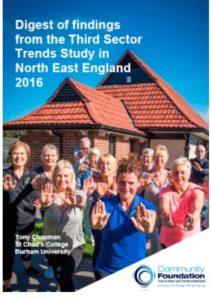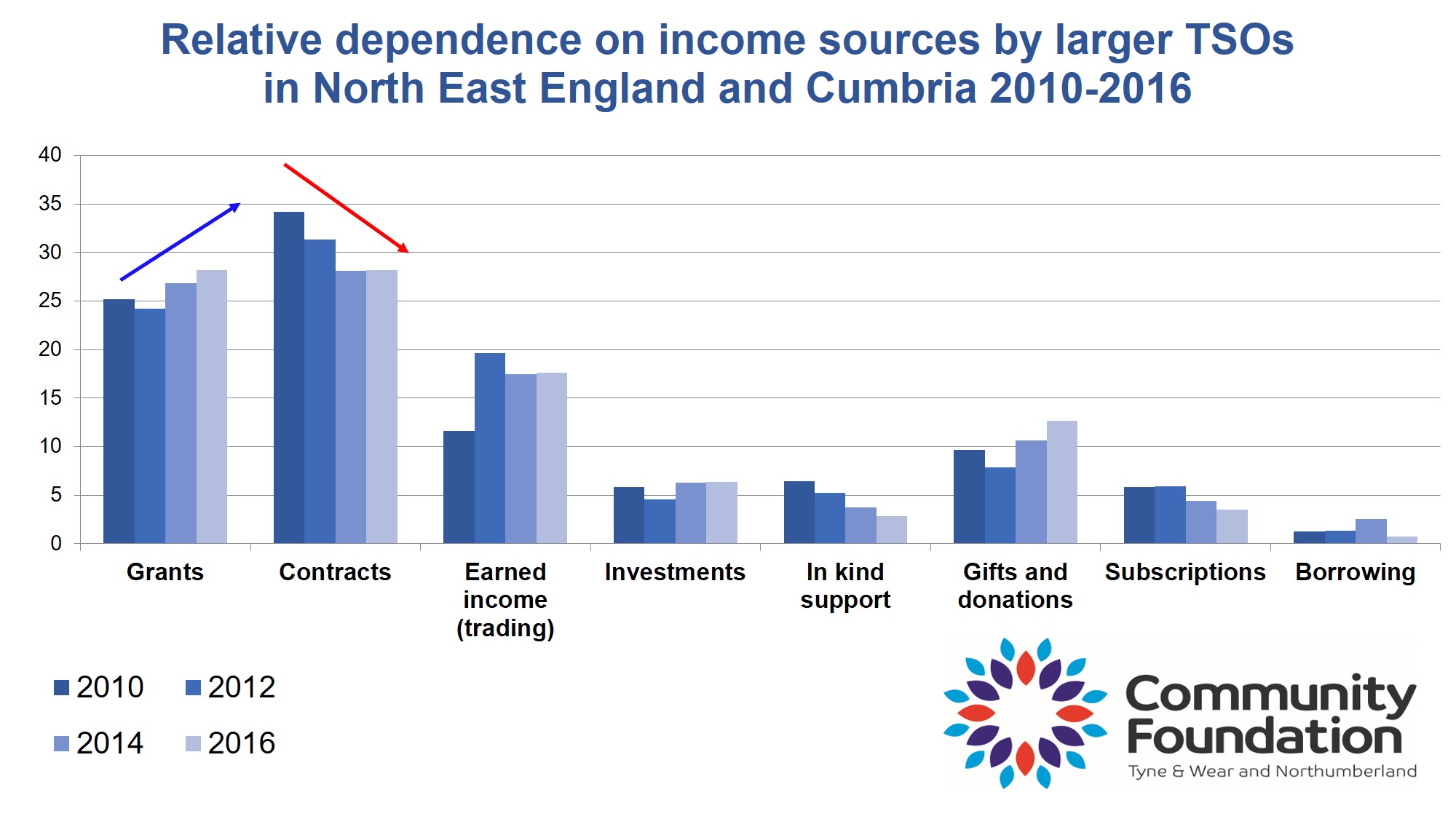The UK Civil Society Almanac has been published this week. According to NCVO’s Karl Wilding on twitter: ‘arguably, the biggest change (since 2000) has been from grants to contracts’.
In bald financial terms, that might be true, in the case of government grants and contracts. But the Almanac also shows that charities with income over £1m absorb 80% of all sector income (this is just 3% of all organisations in the sector).
Most local areas do not host many major charities, so we need to know what is happening to charities in general in relation to grants and contracts. Thankfully, Third Sector Trends Study data is at hand to show what is going on under the surface.
Third Sector Trends Study research, funded by Community Foundation Tyne  & Wear and Northumberland has been running every two years since 2010. The survey of over 1,000 Third Sector organisations (TSOs), asks charity bosses to assess the value of different sources of funding in ‘relative’ terms – that is to tell us about the balance of reliance on different sources of income.
& Wear and Northumberland has been running every two years since 2010. The survey of over 1,000 Third Sector organisations (TSOs), asks charity bosses to assess the value of different sources of funding in ‘relative’ terms – that is to tell us about the balance of reliance on different sources of income.
There’s not much point in including smaller charities in this analysis because so few of them are involved in contracts (only 3% of charities with income below £50,000 do contacts, and just 16% of those with income between £50,000 and £250,000 do so).
Analysis of the larger TSOs with income above £250,000 is more sensible because 46% of them are engaged in contracts. In this analysis we don’t restrict ourselves just to government grants and contracts though, but from all funding sources (including, for example, charitable foundations or business led corporate social responsibility programmes).

The evidence shows that the relative importance of grant income has actually risen since 2010, while reliance on contracts has fallen. Indeed, these sources of income are now level pegging in importance. It is also interesting to note that reliance on other forms of earned income (such as self-generated trading activities) has increased since 2010.
The importance of investment income has remained relatively flat, as is the case with gifts and donations. In-kind support and subscriptions have become less important too, in relative terms, while reliance on borrowed money is virtually insignificant.
If you want to read the full report from Third Sector Trends Survey, you can find it here.
If you want to look at the data, you can find them here: Relative importance of income sources TST 2010-16
